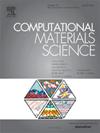Ripple structure and electronic property degradation of Graphene/α-SiO2 induced by low-Energy self‐Ion irradiation
Abstract
The unexpected performance degradation often occurs when ion beams are applied to improve graphene devices performance and the mechanism of performance degradation is still controversial. The current theoretical research on the degradation mechanism nearly overlooks the influence of the substrate. In this work, the low-energy ion irradiation response of the Graphene/α-SiO2 system is investigated by molecular dynamics and first-principles calculations to understand the possible impact of the substrate. The 40 eV∼10 keV C ions are selected as self-ions for irradiation to avoid the introduction of impurities. The simulated results show that some low-energy C ions rebound between the graphene layer and α-SiO2 substrate because some of the C ions are rebounded on the substrate surface rather than entering the substrate. The flat graphene becomes a ripple structure due to the rebound of C ions and the distance between graphene and substrate increases. The ripples result in the indirect band gap and the increased effective mass to degrade the electronic performance of graphene devices. In addition, the coupling between ripples and vacancy defects significantly exacerbates the degradation of graphene transport capacity. The substrate is still amorphous during irradiation, but some C ions entered the substrate hinder its insulation property. Overall, the changes in electronic properties caused by ripple structures coupled with vacancy defects should be an important factor responsible for device performance degradation. This work provides a new insight into the performance modification and degradation mechanism of graphene-based devices by ion beams.


 求助内容:
求助内容: 应助结果提醒方式:
应助结果提醒方式:


